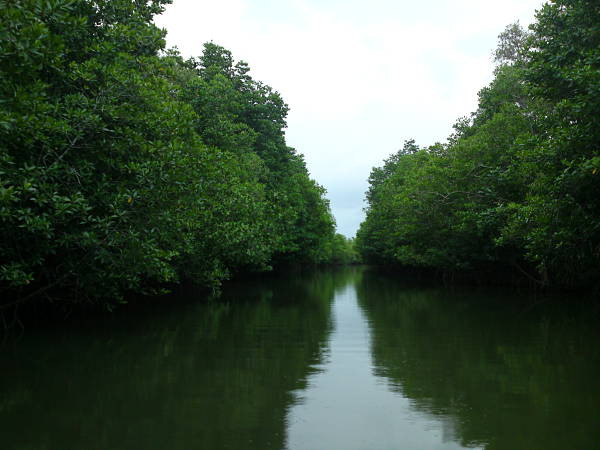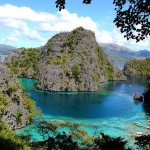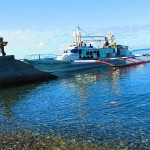Mangroves enchant me in the same way underwater worlds do. They appeal to my sense of wonderment that I cannot quite verbalize, as if some primeval part of me responds to the shrill cries kingfishers make as they flit from tree to tree. Everytime I find myself in a mangrove cruise, I am completely one with nature, filled with rapture that only a communion with divine could make possible. The almost eerie silence in the mangroves punctuated every now and then by the sounds of the wildlife is what primitive life would have sounded like, so in a way, going on a mangrove cruise is like going back in time.

Old-growth mangrove forest on the banks of Nauhang River
The old-growth mangrove forests of Sipalay have always been a sort of a playground for me, albeit only in fleeting instances when I need to cross a river to get to the other side of the island. I would make side trips, upstream, to the fingers of still green waters to get in touch, however briefly, with nature in its unadulterated state. Sipalay mangroves are far from unspoiled, but to an untrained eye, I could barely make out the faint trails that locals leave behind as they go about their crab-trapping business or crude fishing expeditions. Sipalay mangroves still brim with wildlife that they support everyone in the food web.
As you might remember from Biology class, mangroves are the nursery grounds of hatchlings. A staggering 70% of tropical fish seek shelter, food and protection from predators in tangled mangrove roots, and this breeds biodiversity up in the food chain which benefits all marine parties concerned, including the top predator of them all – humans.
As a buffer zone between fresh and saltwater ecosystems, mangroves are indispensable. They filter soil eroded from the uplands (as was the case when gold was mined in Sipalay uplands), and they protect the coasts from the ravages of storms, waves and tidal water erosion. It also helps that they absorb carbon dioxide and trap sediments that could contaminate nearby coral reefs and grass beds.
“Nipa” and mangrove trees in Sipalay Diutay just across the Sipalay River
But to me, mangroves are not just lessons in biology. They also lend perspective on character.
Mangroves thrive in saline environment, an environment that otherwise would make plants of lesser constitution shrivel and eventually die. But mangroves have developed impressive coping mechanisms to make the most of their ‘bitter’ circumstances.
To regulate their ‘salt intake’, mangroves ‘sweat’ excess salt off their leaves. Looking at how vigorous mangroves grow in Sipalay estuaries, they have done an excellent job at thriving in a saline environment.
Mangroves stand sturdy despite the daily ebb and flow of tides. This is because they have developed a root architecture to keep them well-grounded regardless of the strength of current; a root system so ingenious that it’s a marvel to look at. Their fruits are also exceptionally well-suited to their surroundings. They are hung like long green cigars with pointed tips so when they fall, they plant themselves firmly despite the daily comings and goings of the tide.
From root to the topmost leaf, mangroves are the embodiment of adaptation. They make the most of what they have to not just survive, but thrive in full blossom. From the perspective of garden plants, mangroves are a hardy species. They are altogether left alone to fend for themselves, and only have saltwater and occasional debris to feed on in order to survive. Yet, they flourish – and definitely not just for themselves, but for the multitude of others as well.
Photos by Cherry
Explore the rest of the world
More from my site
Article by Chris
Chris had a passion to contribute to society especially to fellow travelers like himself. He also had a passion for Southeast Asia and frequently visited. While brainstorming ideas, he decided that a travel blog dedicated to his favorite countries, Thailand and Singapore, could be more beneficial than any guidebook. Only one year later did the blog’s success bring in more writers, more countries, and more readers.
- Google+ |
- More Posts (327)
Help others get the information they need by liking or sharing our page!
Follow @followloveblab




